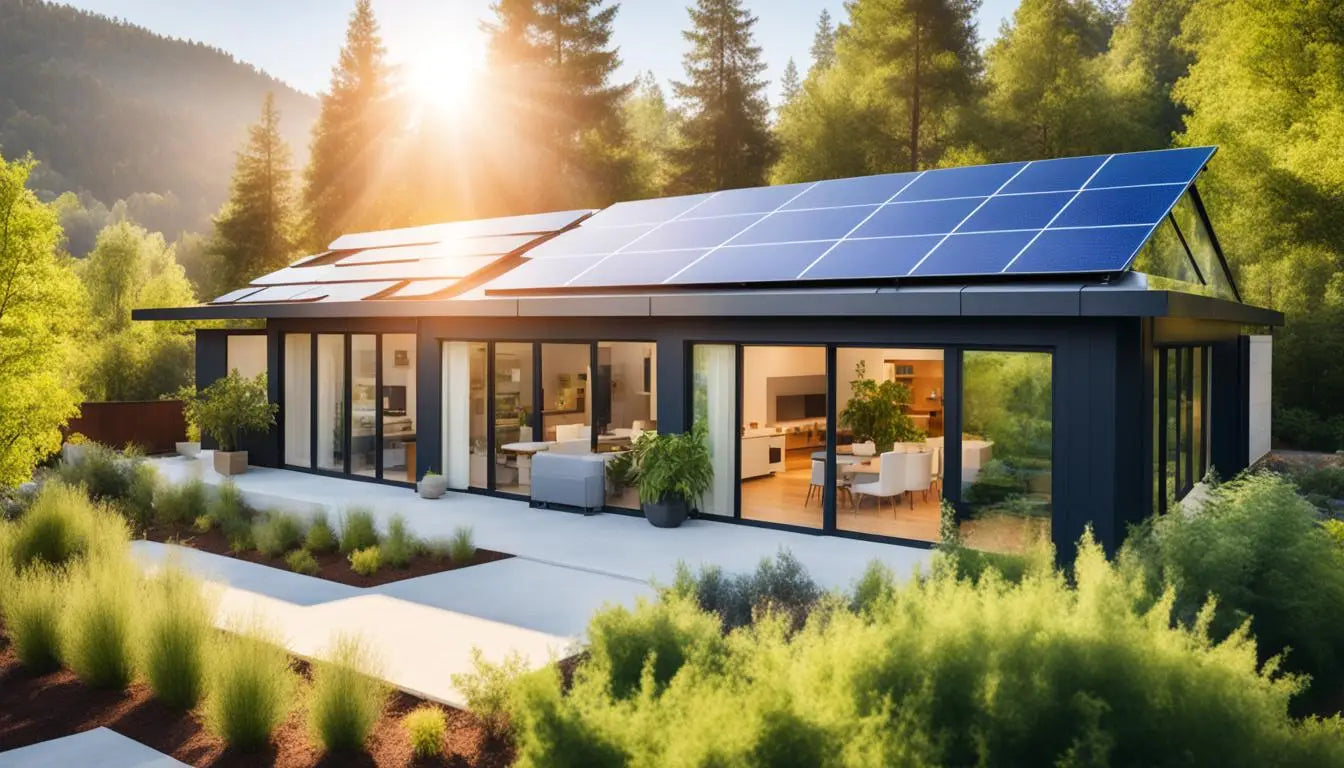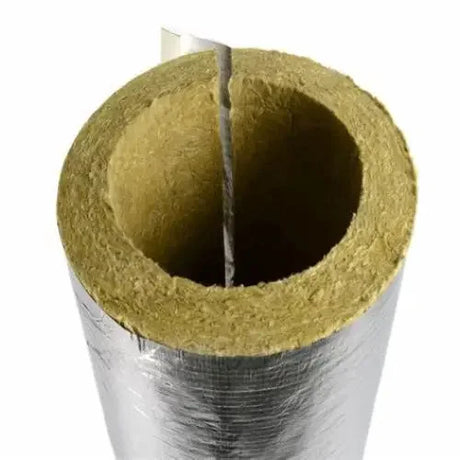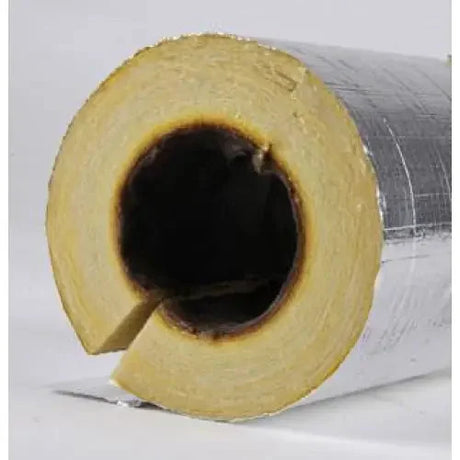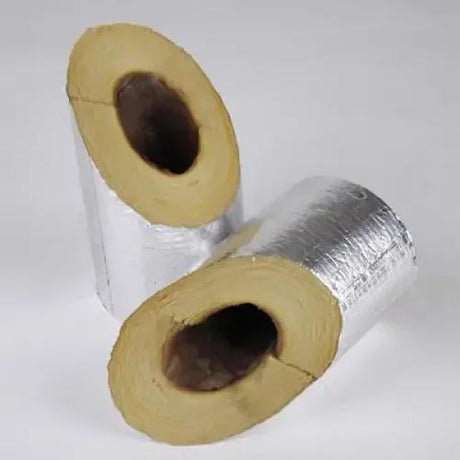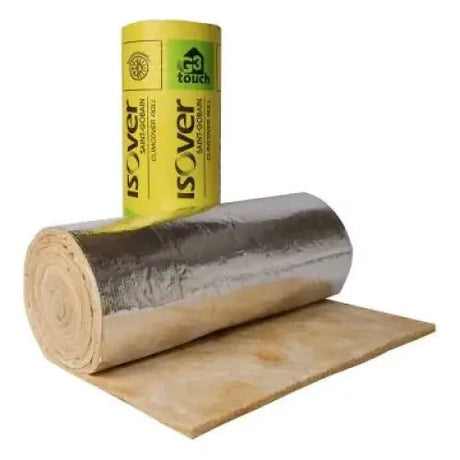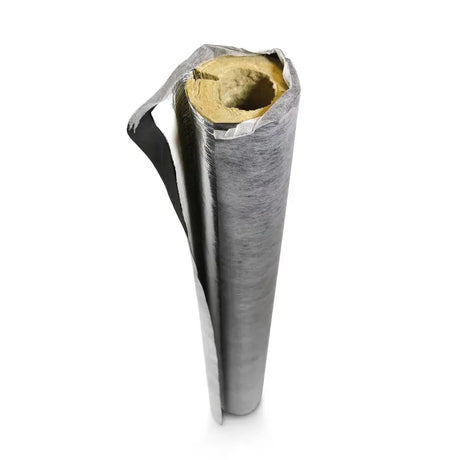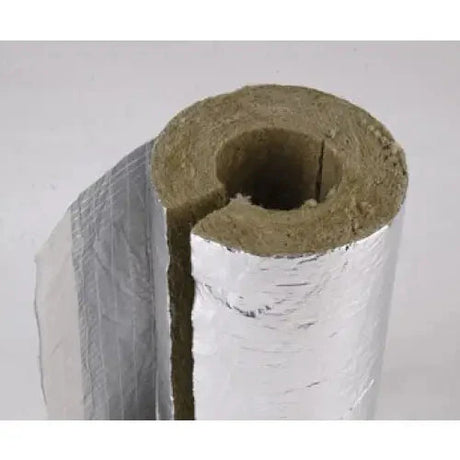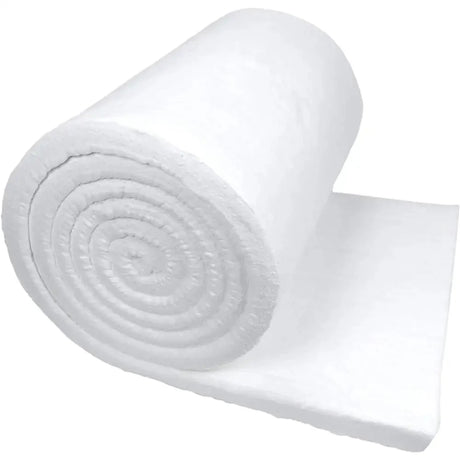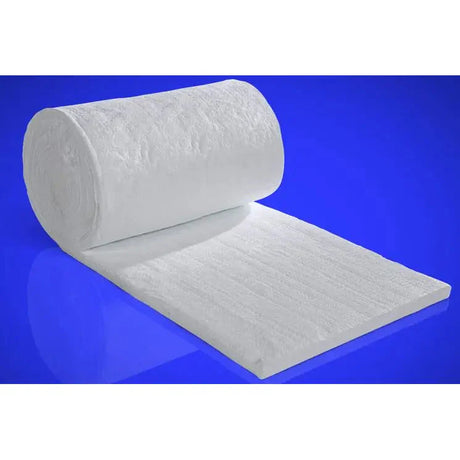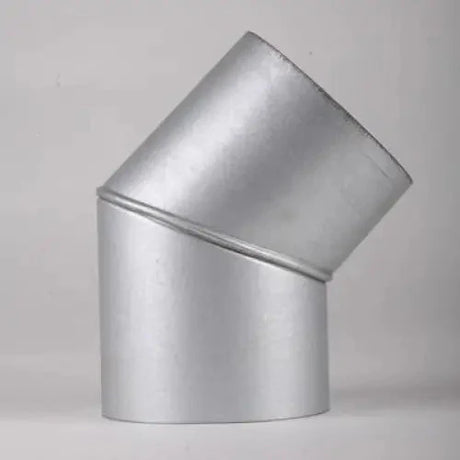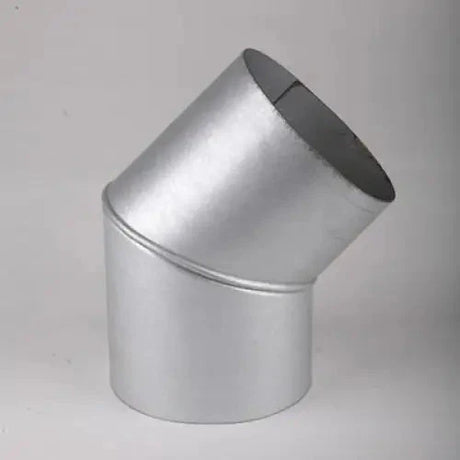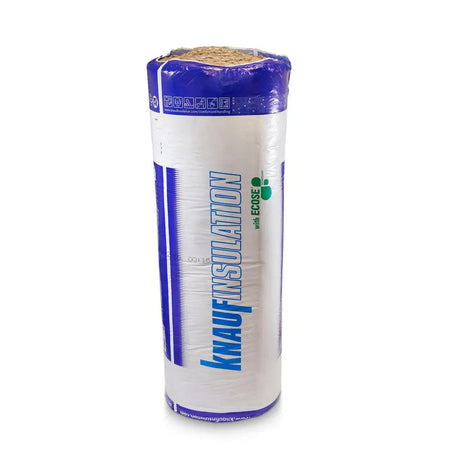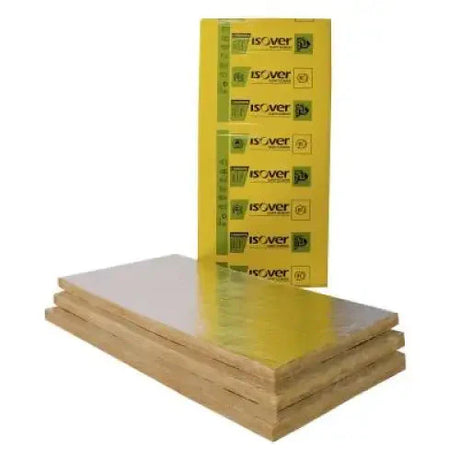Did you know about 25% of a home's heat can escape through a poorly insulated roof?
For solar home investors, it's vital to know the Insulation Requirements for Solar Homes in the UK's evolving regulatory environmet. The Energy Saving Trust highlights that energy-smart choices now can save a lot on future bills. In Solar Home Energy Efficiency, good Thermal Insulation brings comfort. It also prepares homes for upcoming energy rules, making Sustainable Home Design essential.
Using Green Renovation strategies is key to lessening carbon emissions and energy use. This includes advanced insulation and fitting solar panels. Even small steps, like adopting LED bulbs, drastically cut energy costs. Making your solar home well-insulated offers both eco-friendly and financial benefits. It's a smart choice in today's UK energy situation.
Key Takeaways
- Proper insulation can prevent nearly 25% of heat loss through the roof.
- Energy-efficient choices lower future energy bills and comply with future regulations.
- Utilising advanced insulation and solar panels minimises carbon emissions.
- Green renovation practices contribute to sustainable home design.
- Small changes like switching to LED bulbs can reduce household energy use.
The Importance of Proper Insulation in Solar Homes
Proper insulation in solar homes is key to keeping an energy-efficient design. It stops energy loss and cuts down carbon emissions greatly. For UK homeowners, investing in insulation means moving towards sustainability and saving energy.
Why Insulation Matters
Insulation is vital in solar homes for keeping indoor temperatures steady. This makes homes comfy all year. The Energy Saving Trust notes that good draught proofing can reduce carbon emissions by up to 215kg a year. This helps the planet. Also, insulation that suits your local weather can make energy use more efficient.
Benefits of Energy Efficiency
An energy-efficient home uses sustainable materials for environmental and financial gains. For example, heavy lined curtains can keep warmth in during cold periods. Such measures boost your home's Energy Performance Certificate (EPC) rating and lower your energy bills. Insulating your home well shows you care about the environment and increases your property's value.
Understanding Thermal Insulation for Photovoltaic Systems
Thermal insulation boosts the efficiency of photovoltaic systems in solar homes. It drastically cuts energy loss. This keeps the inside temperature steady. It improves the efficiency of the whole photovoltaic system.
Types of Thermal Insulation
There are different types of thermal insulation. They vary in how they are used and how well they work. Some common types are:
- Blanket batts and rolls
- Foam boards
- Loose-fill and blow-in
- Sprayed foam and foamed-in-place
Each insulation type has its advantages. This can directly affect a solar home's energy efficiency. Blanket batts and rolls, for example, are easy to use and good for large areas. Foam boards have high insulation values. They are best for areas that need a lot of thermal resistance.
How Thermal Insulation Affects Solar Home Efficiency
Thermal insulation is key for solar home efficiency. It keeps the indoor climate stable. This reduces the need for extra heating or cooling. This makes the photovoltaic system more efficient by using less energy. Things like U-values are important for choosing the right insulation. They measure how well a material insulates.
The National Energy Awareness (NEA) coursebook talks about keeping heat loss low. High-quality thermal insulation makes photovoltaic systems more efficient. It supports sustainable living and helps lower energy bills.
Energy-Efficient Home Design: A Comprehensive Guide
Making your home energy-efficient is a smart move. It helps lower bills and supports the environment. Key strategies, such as natural light use and good insulation, cut down on non-renewable energy needs.
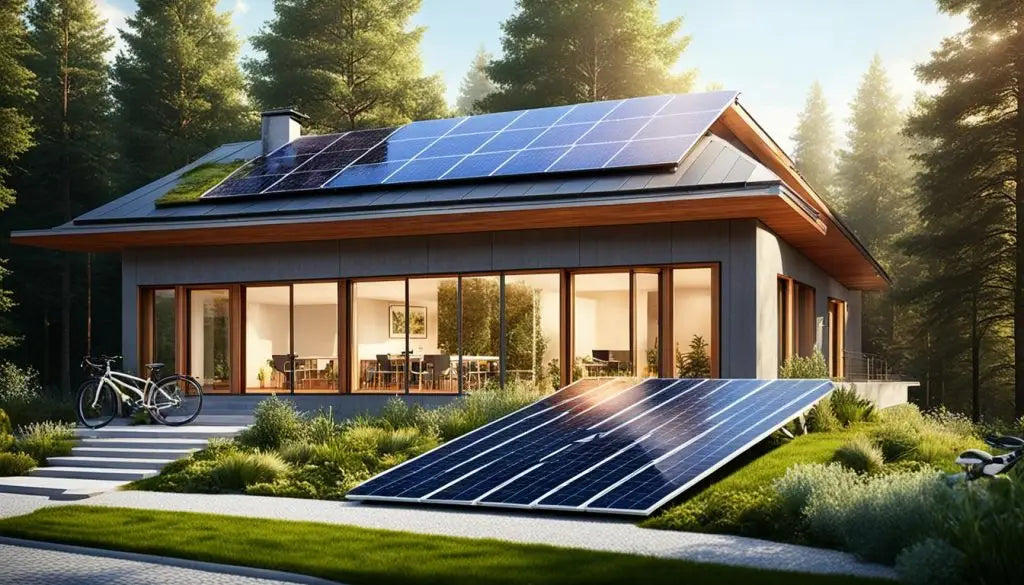
Key Design Principles
Energy efficiency is more than choosing green materials. It involves passive design methods like correct house placement, shading, and letting in natural breezes. Features such as energy-efficient windows and water-saving taps are crucial too.
Using top-notch HVAC systems with timers can make your house comfortable and save energy. Energy-saving lights, like LEDs, also reduce power use while providing enough light.
Integrating Insulation with Solar Panels
Good insulation paired with solar panels boosts your home’s energy game. Insulation keeps indoor temps steady, cutting heating and cooling bills. Solar panels produce clean energy, lessening fossil fuel use and saving money long-term.
When planning an energy-saving home, it's smart to work with energy-efficient design experts. They ensure your project is both sustainable and high-performing. These pros can suggest customised methods and new tech to enhance energy savings.
| Design Strategy | Benefit |
|---|---|
| Passive Design | Optimises energy use and utilises natural elements to maintain comfort |
| High-Efficiency HVAC | Enhances comfort and energy savings through improved systems |
| Sustainable Insulation | Reduces heating and cooling costs, maintains indoor temperatures |
| Solar Panel Integration | Generates clean energy, lowering reliance on fossil fuels |
Sustainable Building Materials for Solar Homes
Choosing sustainable building materials for solar homes is crucial for eco-friendly living. These choices help lower our environmental footprint while being cost-effective. It's about living sustainably and saving money over time.
Eco-Friendly Options
Eco-friendly insulation options are plentiful for modern solar homes. For example, materials like recycled denim, cellulose, and sheep's wool offer great insulation. They are also kind to the environment. Using these materials helps cut down on landfill waste and saves natural resources.
Cost-Effective Sustainable Materials
Selecting sustainable materials also means thinking about cost. Bamboo is a strong, durable choice that grows fast. Insulated concrete forms (ICFs) provide insulation and support, making building cheaper. Mixing these materials with energy-saving appliances and lights boosts green construction's affordability.
| Material | Eco-Friendly | Cost-Efficiency |
|---|---|---|
| Recycled Denim | High | Moderate |
| Bamboo | High | High |
| Sheep's Wool | High | Moderate |
| Insulated Concrete Forms (ICFs) | Moderate | High |
| Cellulose | High | Low |
Climate-Specific Insulation Strategies
It's important to use the right insulation strategies for the British climate. The right materials and techniques help stand up to the UK's changing weather. This includes cold, damp winters and warm, sometimes surprising summers. By doing this, homes can be more energy-efficient and comfortable all year.
Insulating for the British Climate
When insulating for the British weather, it's key to think about the conditions across the UK. Using foam boards and fibre-based products can protect against the cold, damp winters. It's also good to limit heat loss through materials and air, as the NEA suggests. This makes homes more efficient and comfy.
Seasonal Considerations and Adjustments
For the best energy use during the seasons, adding vapour barriers and sealants is smart. These steps cut down on energy loss when it's cold. Also, adjusting insulation to allow air flow in summer keeps homes well-balanced. This full-year approach to dealing with UK weather brings steady energy savings. And it makes homes consistently comfy.
Meeting LEED Certification for Solar Homes
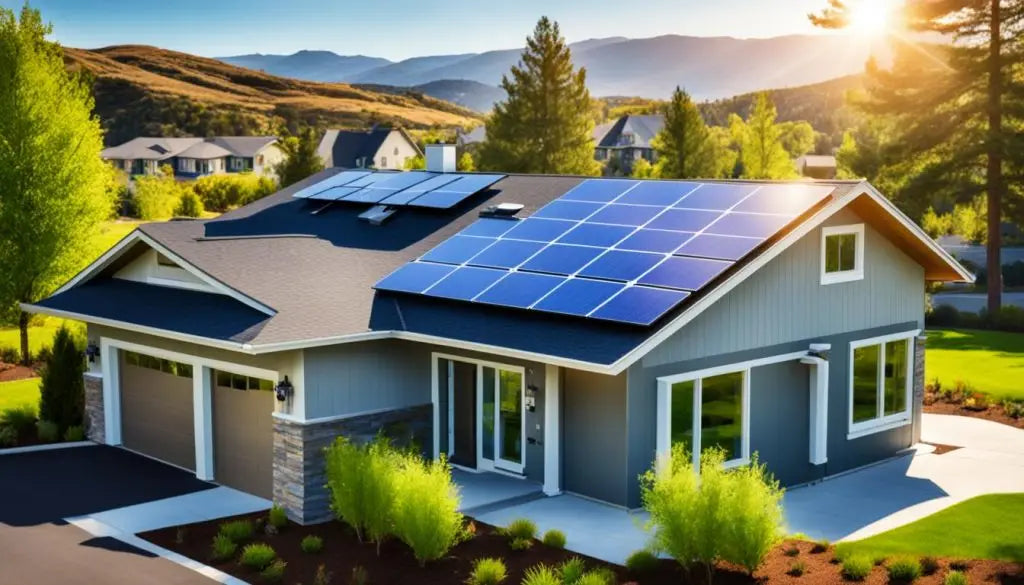
Getting a LEED Certification means your solar home meets tough energy and environment standards. It's all about making buildings more sustainable and green. This journey is key in pushing for eco-friendly building methods.
Understanding LEED Criteria
LEED certification rewards buildings that save energy and support green living. Important areas include cutting down harmful gases, boosting air quality inside, and saving natural resources. This tag shows a home is truly dedicated to being green and saving energy.
Steps to Achieve Certification
To get a LEED certificate for a solar home, you must follow several steps:
- Use windows that keep heat in or out, making your home more energy-efficient.
- Pick insulation that meets tough energy-saving rules, important for winning this green award.
- Choose renewable energy, like solar panels, to use less fossil fuel and cut CO2 emissions.
- Have all the paperwork right for LEED, showing you've thought about waste, how the building fits the land, and how it uses water.
By doing these things, normal homes can become examples of great green building and power saving.
Achieving Energy Star Rated Insulation in Your Solar Home
Getting Energy Star rated insulation in solar homes is key for top energy use and green building. Homeowners can hugely improve their insulation by following Energy Star guidelines. This also ups home energy saving and cuts down carbon footprints.
Overview of Energy Star Standards
Energy Star standards boost home thermal efficiency. They help insulation keep heat in, keeping indoor temperatures steady. Meeting these standards means your home stays warmer or cooler as needed. This shows a commitment to saving energy.
Benefits of Energy Star Insulation
Energy Star rated insulation offers many benefits. It makes sure homes meet high heat efficiency standards. This cuts energy use and keeps temperatures even. And, it helps lower energy bills by making insulation more effective. Using Energy Star insulation is a smart sustainable choice.
| Energy Star Rated Features | Standard Insulation Features |
|---|---|
| High Thermal Efficiency Standards | Basic Thermal Efficiency |
| Minimal Heat Loss | Moderate Heat Loss |
| Enhanced Energy Conservation | Standard Energy Conservation |
| Compliance with Energy Star Standards | Basic Compliance |
Incorporating Moisture and Vapour Barriers
Adding moisture barriers and installing vapour barriers correctly are key to better insulation in solar homes. These barriers help control humidity inside the house. They stop water vapour from getting in and causing damage to the structure. Properly installing these barriers improves insulation and strengthens the house's overall protection.
The National Energy Action (NEA) highlights the importance of moisture barriers in keeping a steady indoor climate. When installed right, moisture barriers help keep the inside environment steady. This aids in the home's energy efficiency and its lasting strength. Careful vapour barrier installation protects the building and boosts insulation.
Focusing on moisture and vapour barriers leads to the best insulation and great protection against weather. This active step towards insulating solar homes makes for a secure and energy-saving living space. It stops moisture problems that could hurt the home’s structure.
Enhancing Safety in Solar Homes through Proper Insulation
Keeping solar homes safe is not just about energy savings. It includes using insulation that can resist fire. The National Energy Foundation stresses the need for the right insulation. It’s vital for fire safety and how well solar panel systems work. By doing this, you lower risks linked with the heat loss in flues, essential for safely using appliances that burn fuel.
Fire Safety and Insulation
Fire safety is critical in solar homes, especially the choice of insulation. Mineral wool and fibreglass are great because they don't burn easily. This adds a layer of protection. The NEF suggests installing insulation carefully around heaters and electrics. It cuts down fire risks. This step not only makes homes safer but also supports sustainable living.
Insulation and Solar Panel Protection
Correct insulation is key to keeping solar panels working well for longer. It protects against bad weather and dampness which could reduce their effectiveness. The Energy Saving Trust points out that good insulation keeps solar panels generating energy safely. This ensures your green energy setup keeps running smoothly.
In summary, choosing fire-safe insulation and looking after your solar panels are crucial for a safe solar home. Homeowners can achieve better energy use and live in a secure, eco-friendly home by focusing on these areas.
FAQ
What are the insulation requirements for solar homes in the UK?
The UK's Energy Saving Trust outlines insulation needs for solar homes. They focus on making homes more energy-efficient. Use professional draught proofing, heavy lined curtains, and the right thermal insulation materials.
Why is proper insulation crucial for solar home energy efficiency?
Proper insulation keeps indoor temperatures stable and stops energy waste. It makes solar homes more efficient. This cuts energy bills, boosts the home's Energy Performance Certificate (EPC) score, and lowers carbon emissions.
How does thermal insulation affect photovoltaic system efficiency?
Thermal insulation keeps the inside temperature steady, which makes photovoltaic systems work better. It stops heat loss and energy waste, improving the systems' performance and reliability.
What are the benefits of using sustainable building materials in solar homes?
Sustainable materials lower environmental harm, boost energy efficiency, and save money over time. Using eco-friendly insulation and high-performance items reduces fuel bills and CO2 emissions significantly.
What are climate-specific insulation strategies for the British climate?
For the British climate, pick materials and methods suited to its changing weather. Tackle fabric and ventilation heat loss, use vapour barriers, and adjust seasonally to cut energy loss in the cold months.
What steps are involved in achieving LEED certification for solar homes?
Getting LEED certification means meeting tough standards for energy efficiency and green living. Essential steps involve installing low-emissivity windows, choosing top-notch insulation materials, and using renewable energy like solar panels.
How does Energy Star rated insulation contribute to energy savings in solar homes?
Energy Star insulation is highly thermally efficient, which minimises heat loss and keeps temperatures even. Opting for Energy Star approved products lets homeowners save energy and reduce their energy bills.
Why are moisture and vapour barriers important in solar home insulation?
Moisture and vapour barriers handle indoor humidity and prevent water vapour damage. They help keep a stable climate inside, boosting energy efficiency.
How can proper insulation enhance safety in solar homes?
Good insulation improves safety by being fire-resistant and protecting against environmental risks. Paying attention to flue heat loss and insulating solar panels makes energy production both effective and safe.

